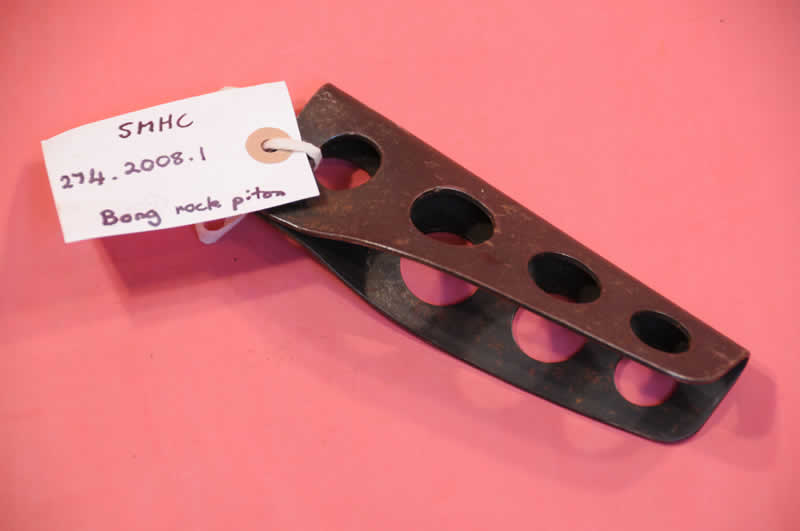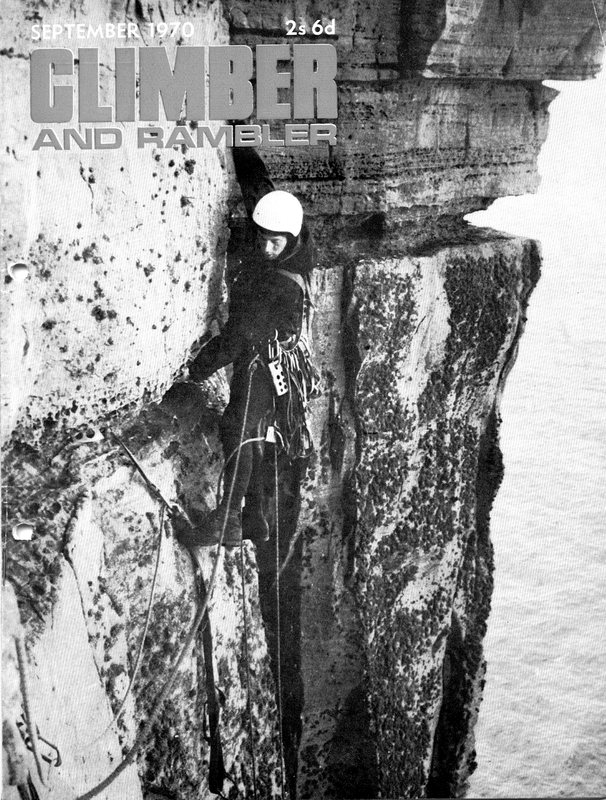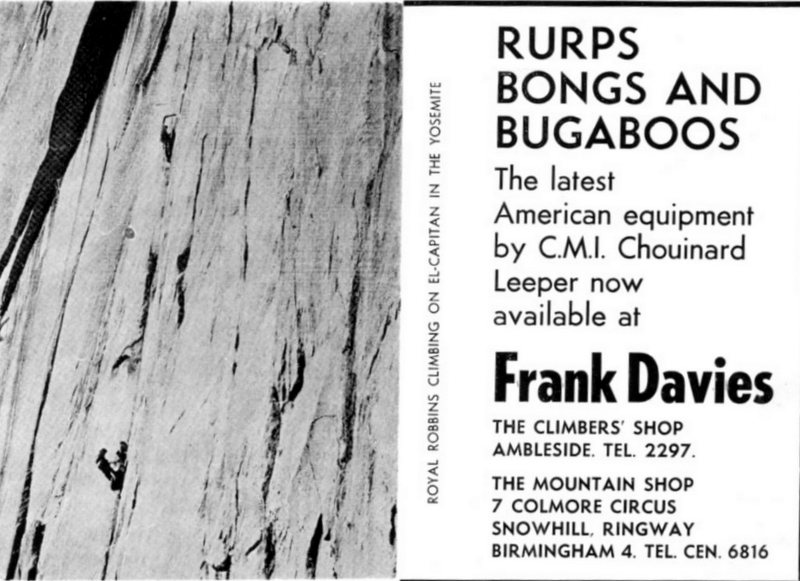Object Item
Chouinard Bong Piton
Description: 'Bong' rock piton. Four holes on either side.
Inscription Description: A diamond with a "C" inside and below the letters "U.S.A."

Object Chouinard Bong Piton
Provenance: A bong is basically a big piton. 'Bongs' take their name from the noise they make when you are banging them into a crack. They were really an American thing, designed to fit in the big, wide, granite cracks of Yosemite (circa 1960) Someone finally realised you could stuff your hand in a crack that size and climb it without a bong. Later, someone came along and invented large camming devices which did the job better so bongs became history. This one was part of Mick Tighe's collection.
The 'C' inscription stands for Chouinard, as they were made (and partly invented) by Yvon Chouinard whose company eventually became Black Diamond.
Like much of British mountaineering terminology weve borrowed the word piton from the continent and in this case it is French; meaning little peg literally. However, to the mountaineering world in general its a metal spike that can be driven into a crack in the rock. They come in all shapes and sizes and have been around for a long, long time; the earliest ones being basically a metal spike driven into the rock for various industrial purposes. Local blacksmiths would have made the first mountaineering versions in the late 1800s. They had fabulous names such as picture hook pitons and Mizzi Langer haken. Because karabiners were yet to be invented the climbing rope was simply hooked over them, or threaded through the attached rope loop or later a metal ring. A blacksmith from the Tyrol area of Austria (he might also have been a mountain guide) called Hans Fiechtl was one of the first to produce a piton with an integral eye around 1930, and this fits nicely with the arrival of karabiners which were being developed around the same time; though Britain was 20 odd years behind the continent in this development there being very few pitons or karabiners around until the ex-WD ones appeared in the army surplus stores after WWII. Early pitons tended to be made from mild steel and some still are; though chrome molybdenum steel is the favoured material in the modern era.
Acquisition Method:
Number of Objects: 1
Object Production
Object Production Place: USA
Materials: metal
Maker: Chouinard
Colour: brown
Dimensions: 15(l) x 5.5(w) x 3.5(d) cms
Object Condition:
Condition Date Check: 28/04/2009
Administration
Accession Number: 274.2008.1
Creator: Hermione Cooper
Accession Date: 10/11/2008
ID: 1
Category:Rock Climbing, Snow & Ice Climbing
Rock Climbing, Snow & Ice Climbing
Location
Location: Bohuntin
Current Location
Rules: Spectrum : UK Museum documentation standard, V.3.1 2007




